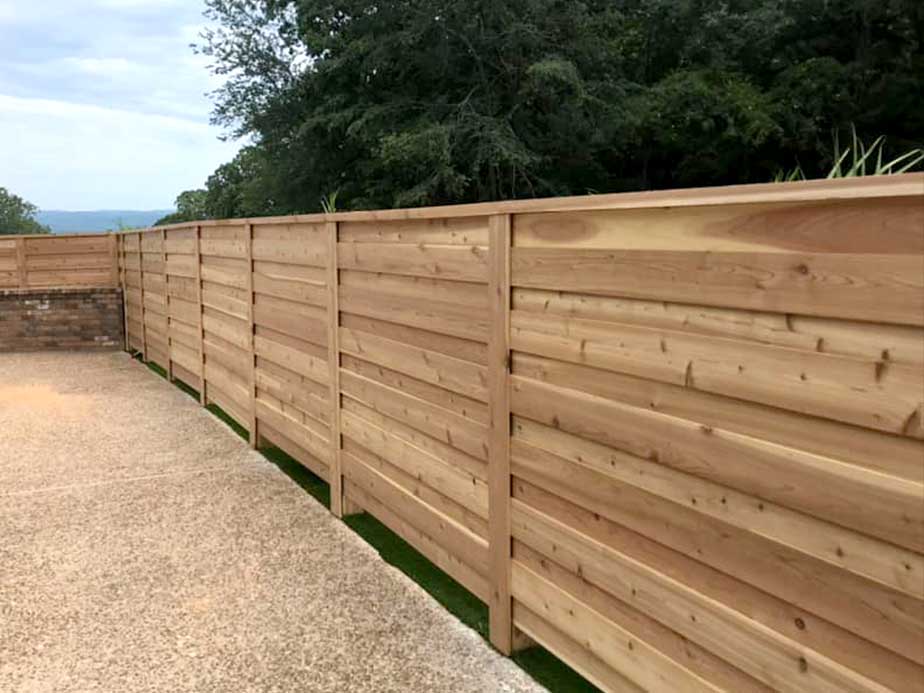All Categories
Featured
Various areas have varying policies, and comprehending what's called for will certainly assist ensure that your fencing is lawful, safe, and developed according to local standards. Right here's a guide to aid you navigate the permitting procedure for fencing installation.
Why Are Permits Called for? Licenses are called for to guarantee that the installment of your fencing fulfills neighborhood building regulations and zoning regulations. These regulations are in place to keep the safety, appearance, and capability of residential or commercial properties in your neighborhood. Furthermore, allows aid stay clear of disagreements with next-door neighbors concerning building lines, fencing height, and various other structural details.
Neighborhood authorities require permits to monitor things like visibility at junctions, public safety and security, and possible damages to energies like water pipes or electrical lines. The procedure assists maintain your fencing project compliant with safety and security and lawful criteria.
Sorts Of Permits You Might Require. The exact authorizations required can vary relying on your place and the specifics of your project. Below are one of the most usual kinds of licenses you may require:
Building Authorization. Lots of cities and counties require a structure permit for fencings that surpass a particular height, usually over 6 feet. This permit ensures that your fencing abides by structural requirements, particularly if it's made from details materials such as concrete, steel, or block. Building permits are also necessary when your fencing influences the general landscape, like developing a sound barrier or obstructing a sightline.
Zoning License. Zoning authorizations are issued to ensure that your fence conforms with neighborhood zoning legislations. These legislations might regulate where fencings can be positioned on your building (e.g., backyard, side, or front), how high they can be, and whether they can be installed near streets or sidewalks. Zoning legislations are implemented to protect the total aesthetic appeals of neighborhoods and maintain traffic safety.
Problem License. Some areas have problem laws that establish exactly how far a fence must be from the home line, road, or specific public rooms. Trouble permits are created to guarantee that your fencing doesn't disrupt neighboring buildings or public areas. A residential or commercial property study might be needed to validate building lines before acquiring this type of authorization.
HOA Authorization. If you live in an area regulated by a Homeowners Organization (HOA), you may need to obtain authorization from the HOA prior to setting up a fencing. HOAs frequently have rigorous guidelines about the kind of fence admitted the area, including its product, shade, and elevation. Constantly get in touch with the HOA before starting your task to stay clear of any type of problems.
Just How to Make An Application For a Fence Authorization. The process for acquiring a permit generally entails a number of steps:
Study Resident Rules. Beginning by checking your city or region's web site to discover the particular needs for fencing setup. You may need to check out the neighborhood preparation or building department personally for more thorough info.
Prepare Your Application. Many cities will call for an application, which includes information concerning your intended fence, such as:
![]()
The sort of fencing product (wood, vinyl, chain-link, etc) The planned height of the fence. The location and dimensions of the fencing. A building study (to validate residential or commercial property lines) Send the Application. After finishing the application, send it to the neighborhood structure or zoning office. You may be called for to pay a charge depending on your place and the dimension of your fence. Fees can differ, however they generally cover the expense of refining your demand and evaluating your strategies.
Wait On Authorization. As soon as your application is submitted, the regional authorities will certainly assess your strategies to guarantee they meet zoning and constructing needs. This process can take anywhere from a few days to a number of weeks, relying on the complexity of the task and the quantity of license requests in your area.
![]()
Assessment (If Needed) In some instances, you may require to arrange an inspection after the fence is set up to ensure it meets the needed standards. Your neighborhood workplace will let you understand if this step is essential.
When You Don't Need a Permit,. Not every fencing setup requires a license. Some situations where you might not require a license consist of:
Mounting a fencing that's under a particular elevation (often 3-4 feet for front backyards) Changing an existing fencing with one that coincides height and material. Mounting a short-lived fence (e.g., for building and construction or gardening) Nevertheless, also if your task appears small, it's always advisable to consult local authorities to ensure you're complying with the proper process.
Consequences of Not Getting a License. Mounting a fence without the essential authorization can cause considerable repercussions, including penalties, elimination of the fence, and costly reinstallation. Sometimes, regional authorities might need you to change the fence if it doesn't meet code needs. Additionally, not obtaining a license could produce disagreements with next-door neighbors, especially if the fencing is positioned improperly or violates local height laws.
Final thought. Prior to installing a fence, it is necessary to research the specific allowing requirements in your location. If a license is necessary and to make certain that you're following the correct procedure, call your local building or zoning department to find out. By securing the right authorizations, you'll make sure and stay clear of lawful concerns that your fence installation is secure, compliant, and convenient.
Why Are Permits Called for? Licenses are called for to guarantee that the installment of your fencing fulfills neighborhood building regulations and zoning regulations. These regulations are in place to keep the safety, appearance, and capability of residential or commercial properties in your neighborhood. Furthermore, allows aid stay clear of disagreements with next-door neighbors concerning building lines, fencing height, and various other structural details.
Neighborhood authorities require permits to monitor things like visibility at junctions, public safety and security, and possible damages to energies like water pipes or electrical lines. The procedure assists maintain your fencing project compliant with safety and security and lawful criteria.
Sorts Of Permits You Might Require. The exact authorizations required can vary relying on your place and the specifics of your project. Below are one of the most usual kinds of licenses you may require:
Building Authorization. Lots of cities and counties require a structure permit for fencings that surpass a particular height, usually over 6 feet. This permit ensures that your fencing abides by structural requirements, particularly if it's made from details materials such as concrete, steel, or block. Building permits are also necessary when your fencing influences the general landscape, like developing a sound barrier or obstructing a sightline.
Zoning License. Zoning authorizations are issued to ensure that your fence conforms with neighborhood zoning legislations. These legislations might regulate where fencings can be positioned on your building (e.g., backyard, side, or front), how high they can be, and whether they can be installed near streets or sidewalks. Zoning legislations are implemented to protect the total aesthetic appeals of neighborhoods and maintain traffic safety.
Problem License. Some areas have problem laws that establish exactly how far a fence must be from the home line, road, or specific public rooms. Trouble permits are created to guarantee that your fencing doesn't disrupt neighboring buildings or public areas. A residential or commercial property study might be needed to validate building lines before acquiring this type of authorization.
HOA Authorization. If you live in an area regulated by a Homeowners Organization (HOA), you may need to obtain authorization from the HOA prior to setting up a fencing. HOAs frequently have rigorous guidelines about the kind of fence admitted the area, including its product, shade, and elevation. Constantly get in touch with the HOA before starting your task to stay clear of any type of problems.
Just How to Make An Application For a Fence Authorization. The process for acquiring a permit generally entails a number of steps:
Study Resident Rules. Beginning by checking your city or region's web site to discover the particular needs for fencing setup. You may need to check out the neighborhood preparation or building department personally for more thorough info.
Prepare Your Application. Many cities will call for an application, which includes information concerning your intended fence, such as:

The sort of fencing product (wood, vinyl, chain-link, etc) The planned height of the fence. The location and dimensions of the fencing. A building study (to validate residential or commercial property lines) Send the Application. After finishing the application, send it to the neighborhood structure or zoning office. You may be called for to pay a charge depending on your place and the dimension of your fence. Fees can differ, however they generally cover the expense of refining your demand and evaluating your strategies.
Wait On Authorization. As soon as your application is submitted, the regional authorities will certainly assess your strategies to guarantee they meet zoning and constructing needs. This process can take anywhere from a few days to a number of weeks, relying on the complexity of the task and the quantity of license requests in your area.

Assessment (If Needed) In some instances, you may require to arrange an inspection after the fence is set up to ensure it meets the needed standards. Your neighborhood workplace will let you understand if this step is essential.
When You Don't Need a Permit,. Not every fencing setup requires a license. Some situations where you might not require a license consist of:
Mounting a fencing that's under a particular elevation (often 3-4 feet for front backyards) Changing an existing fencing with one that coincides height and material. Mounting a short-lived fence (e.g., for building and construction or gardening) Nevertheless, also if your task appears small, it's always advisable to consult local authorities to ensure you're complying with the proper process.
Consequences of Not Getting a License. Mounting a fence without the essential authorization can cause considerable repercussions, including penalties, elimination of the fence, and costly reinstallation. Sometimes, regional authorities might need you to change the fence if it doesn't meet code needs. Additionally, not obtaining a license could produce disagreements with next-door neighbors, especially if the fencing is positioned improperly or violates local height laws.
Final thought. Prior to installing a fence, it is necessary to research the specific allowing requirements in your location. If a license is necessary and to make certain that you're following the correct procedure, call your local building or zoning department to find out. By securing the right authorizations, you'll make sure and stay clear of lawful concerns that your fence installation is secure, compliant, and convenient.
Latest Posts
Take Advantage of Exclusive Auto Repair Specials in Chicago at Montclare Auto Repair
Published May 27, 25
1 min read
Why Consistent Car Maintenance at Montclare Auto Repair Saves You Money
Published May 24, 25
1 min read
Experience Your Financial Partner at WyHy – Key Advantages for Your Financial Success
Published May 23, 25
1 min read
More
Latest Posts
Take Advantage of Exclusive Auto Repair Specials in Chicago at Montclare Auto Repair
Published May 27, 25
1 min read
Why Consistent Car Maintenance at Montclare Auto Repair Saves You Money
Published May 24, 25
1 min read
Experience Your Financial Partner at WyHy – Key Advantages for Your Financial Success
Published May 23, 25
1 min read